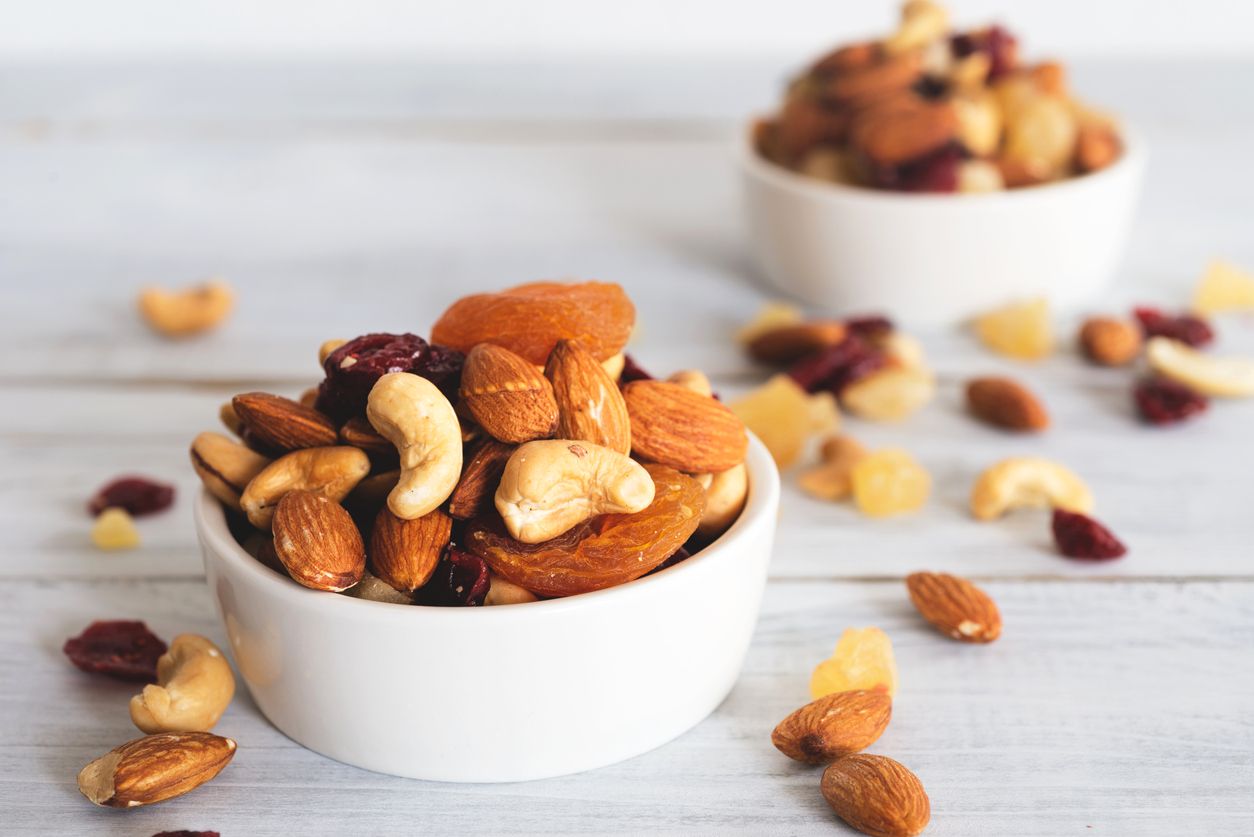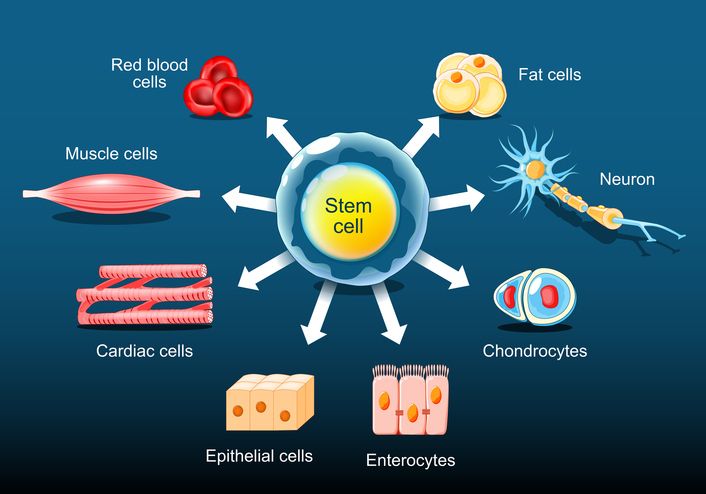Author: Natalie Ng|Updated: 9 June 2025
Keeping blood sugar levels stable throughout the day can make a real difference in how your body burns fat. When you eat foods that spike blood sugar quickly, insulin levels rise fast too. That rise can push your body out of fat-burning mode and into energy-storing mode. Low insulin-spike snacks help regulate blood sugar without causing that sharp response. They support steady energy, help reduce cravings, and fit easily into a healthy diet—especially for people with diabetes or insulin resistance. Instead of cutting out snacks altogether, choosing foods with healthy fats, lean protein, and fiber can help manage insulin levels and maintain balanced energy. Options like cottage cheese, nuts and seeds, or wholegrain crackers with nut butters are satisfying without adding extra sugar or refined grains. But before we get into the best low insulin-spike snacks, it helps to understand what insulin spikes do to your body—and how they can interfere with fat-burning.

Low Insulin Spike Snacks: Their Impact on Fat-Burning

Why stable insulin levels matter for body fat and energy
When blood sugar rises quickly after eating, the body releases insulin to bring sugar levels back down. This is a normal part of how the body works. But if insulin levels stay high too often—such as after eating foods with added sugar, refined grains, or sugary drinks—it can interfere with fat-burning.
High insulin levels signal the body to store energy instead of using fat for fuel. That’s why frequent blood sugar spikes can slow down fat loss and make it harder to manage weight, even if total calorie intake isn’t very high.
For people with diabetes or insulin resistance, this effect can be even stronger. Their bodies may release more insulin or take longer to lower blood glucose, which makes managing energy levels and appetite more difficult.
Foods that spike blood sugar quickly
Certain foods are more likely to cause sharp blood sugar spikes, especially when eaten alone or in large amounts. These include:
• Refined grains like white bread or pastries
• High sugar foods such as milk chocolate or sweet treats
• Sugary drinks including soda, juice, and energy drinks
• Low-fiber, high-starch foods like chips or some processed snacks
Choosing healthy snack options that avoid these ingredients can help regulate blood sugar levels and support a balanced diet focused on long-term health. Instead of high-sugar or refined grain foods, consider healthy options such as healthy snacks like soy milk or bean curd to satisfy cravings and support better blood sugar management.
Low-Insulin Snacks Option 1: Hard-Boiled Eggs
Hard-boiled eggs help regulate blood sugar levels
Hard-boiled eggs are one of the easiest low insulin-spike snacks to add to your routine. They’re naturally low in carbs, rich in protein—an essential nutrient for blood sugar regulation—and packed with healthy fats. This combination supports healthy blood sugar levels without triggering a sharp insulin response. Because they don’t spike blood sugar, they’re a solid option for people with diabetes or anyone focused on blood sugar management. Hard-boiled eggs also make a great snack for blood sugar control.
Eating eggs regularly may also support appetite control, which helps reduce unnecessary energy intake throughout the day.
Simple to prep, easy to carry
Hard-boiled eggs are also practical. They store well and don’t require much effort to prepare.
• Boil several eggs at once and keep them unpeeled in an airtight container in the fridge. They stay fresh for up to seven days.
• Take two eggs with you in a small container and add a little salt or pepper.
• If you want a bit more flavour, try a small swipe of mustard or a sprinkle of seasoning without added sugar.
•

Low-Insulin Snacks Option 2: Mixed Nuts and Seeds

Why mixed nuts and seeds support stable insulin levels
Mixed nuts and seeds offer a balance of healthy fats, plant-based protein, and dietary fiber—all of which help regulate blood sugar levels and prevent insulin spikes. Because they digest slowly, they help keep blood sugar stable throughout the day. This supports fat-burning and makes them a practical part of a diabetes diet or a balanced diet focused on blood sugar management.
They also provide key nutrients that support people with diabetes and those managing insulin resistance, making them a strong everyday snack choice.
Nutrients in nuts and seeds that help blood sugar control
Choosing the right combination adds both variety and nutritional value. Use raw, unsalted nuts and seeds to avoid added sugar, excess sodium, or refined oils.
• Almonds: High in magnesium and vitamin E, both linked to better blood glucose control and lower risk of cardiovascular disease.
• Macadamia nuts: Rich in monounsaturated fats, which support heart health and help stabilize insulin levels.
• Pumpkin seeds: Contain zinc and iron, which help support energy levels and immune function.
• Brazil nuts: A good source of selenium. Just one nut gives you your daily requirement, which may help with insulin sensitivity.
• Walnuts: Provide omega-3 fatty acids that may lower cholesterol levels and support blood sugar regulation.
Easy ways to portion and store
Pre-portioning nuts and seeds keeps calorie intake in check and makes them easy to grab on busy days:
• Stick to around 1/4 cup per serving to avoid eating too much saturated fat. A half cup serving would double the calories and fat, so portion control is important.
• Store in small, airtight containers for freshness.
• Keep a few in your bag, desk, or kitchen drawer for regular access.
Book Now to Experience
S6 Body Sculpting Treatment
1 Minute Self-Registration
Date should not be before minimal date

Low-Insulin Snacks Option 3: Grass-Fed Beef Jerky
Benefits of grass-fed jerky for blood sugar management
Grass-fed beef jerky is a high-protein, low carb snack that helps keep blood sugar stable. It doesn’t contain added sugar or starchy fillers, which makes it ideal for avoiding blood sugar spikes. Compared to grain-fed beef, grass-fed varieties provide more omega-3 fatty acids and conjugated linoleic acid (CLA)—both linked to better insulin response and lower inflammation.
This makes it a useful option for people managing diabetes, insulin resistance, or following a low-insulin diet.
Nutritional comparison: grass-fed vs. grain-fed
The source of the beef affects both the quality and nutritional value. Here’s how grass-fed jerky stands out:
• Omega-3 fatty acids: Higher in grass-fed beef, which may support heart health and insulin sensitivity.
• CLA (conjugated linoleic acid): Grass-fed options contain 2–3 times more CLA, a fat shown in clinical evidence to support fat metabolism.
• Micronutrients: Grass-fed jerky usually has more vitamin A and vitamin E, which support immunity and cell repair.
What to look for when buying
Not all jerky products are created equal. To make sure you're supporting healthy blood sugar levels, check the ingredient label:
• Avoid jerky with added sugar, corn syrup, or preservatives.
• Look for simple ingredient lists—just beef, salt, and spices.
• A portion of 2–3 ounces provides roughly 20–30 grams of protein, which helps manage hunger and support lean muscle mass.

Low-Insulin Snacks Option 4: Avocado
Why avocados help regulate insulin levels
Avocados are naturally low in carbs and rich in monounsaturated fats, making them one of the most effective low insulin-spike snacks. They support healthy blood sugar levels by slowing digestion and reducing the chance of a blood glucose spike after eating. One medium avocado contains about 22 grams of fat, mostly from healthy sources, and only around 3 grams of net carbs.
This nutrient profile helps support a balanced diet for people with diabetes and those managing insulin resistance.
Nutrients in avocados that support blood sugar control
Avocados are packed with essential nutrients that play a role in blood sugar regulation and overall energy balance:
• Potassium: Helps maintain fluid balance and may ease symptoms of fatigue often linked to low carb diets.
• Magnesium: Supports muscle recovery and may improve insulin sensitivity.
• Vitamin E: Acts as an antioxidant that supports skin health and immune function.
• B vitamins: Contribute to steady energy levels and nervous system support.
• Fiber: Promotes digestive health and may help regulate sugar levels after meals.
Easy ways to prepare and carry
Avocados are portable and easy to prep in advance. Here are a few tips:
• Cut in half, leave the pit in, and wrap tightly to prevent browning.
• Add a sprinkle of sea salt or lemon juice for flavour and freshness.
• Store in a small container or wrap for transport without needing extra prep on the go.

Low-Insulin Snacks Option 5: Olives
Importance of olives in supporting healthy insulin levels
Olives are a savory snack that deliver healthy fats without causing blood sugar spikes. They’re naturally low in carbs and provide monounsaturated fats, which support insulin regulation and help stabilize blood glucose levels. Their fat content slows digestion and contributes to longer-lasting fullness, making them a practical part of a diabetes-friendly or low carb diet.
This makes olives a simple way to support healthy blood sugar management without relying on processed or sugary foods.
Types of olives and their fat content
Different varieties offer slightly different nutritional profiles, but all are suitable for a low insulin-spike snack. Here’s a breakdown of average fat content per five olives:
• Kalamata: About 10.5 grams of fat
• Green: Around 7.5 grams of fat
• Black: Approximately 6.5 grams of fat
• Castelvetrano: About 8 grams of fat
These values reflect the high content of monounsaturated fat that supports cardiovascular health and helps regulate insulin levels.
Portable and shelf-stable snack option
Olives are one of the easiest snacks to carry with you. They require no refrigeration for several hours and are available in:
• Small, resealable containers you can portion at home
• Ready-to-eat single-serve pouches found in most grocery stores
They also contain polyphenols and antioxidants that may reduce inflammation and improve insulin response over time
Book Now to Experience
S6 Body Sculpting Treatment
1 Minute Self-Registration
Date should not be before minimal date

Low-Insulin Snacks Option 6: Cheese Crisps
How cheese crisps help stabilize blood sugar levels
Cheese crisps are a low carb, high protein snack that supports blood sugar regulation without triggering an insulin spike. Because they contain no added sugar or refined grains, they help keep insulin levels steady. Their fat and protein content also slows digestion, which helps prevent sudden rises in blood glucose.
This makes them a practical snack choice for diabetic patients, people managing insulin resistance, or anyone aiming to reduce sugar levels throughout the day.
Nutrients in cheese crisps that support a low-insulin diet
Cheese crisps are rich in:
• Protein: Helps manage hunger and supports lean body mass
• Calcium: Essential for bone health and may support metabolic function
• Healthy fats: Help stabilize energy levels and delay blood sugar spikes
They also don’t include starchy vegetables, added sugar, or refined grains—making them suitable for low carb and diabetic-friendly meal plans.
Simple preparation and storage tips
Cheese crisps are easy to make at home using just one ingredient: cheese. Here’s how:
• Shred a firm cheese like parmesan or cheddar
• Spoon into small piles on a baking sheet and bake until golden and crisp
• Let them cool completely before storing
You can store them in airtight containers for up to two weeks. For variety, sprinkle with herbs or spices that don’t contain added sugar or starch.

Low-Insulin Snacks Option 7: Canned Sardines
Why sardines support steady insulin levels and energy
Canned sardines are one of the most nutrient-dense low insulin-spike snacks you can keep on hand. They’re packed with lean protein and omega-3 fatty acids, both of which help stabilize blood sugar levels and support a healthy insulin response. A standard 3.75-ounce can provides about 23 grams of protein and nearly 2 grams of omega-3s, making them a strong choice for blood sugar management.
Their high fat and protein content slows digestion, reducing the chance of blood sugar spikes while also keeping hunger in check for longer periods.
Nutrients in sardines that support blood sugar regulation
Sardines offer a wide range of essential nutrients that benefit both metabolic health and energy balance:
• Calcium: More than most dairy products, which helps support bone health
• Vitamin B12: Supports energy production and brain function
• Omega-3s: May reduce inflammation and improve insulin sensitivity
• Vitamin D: Helps regulate blood glucose levels and supports immune health
These nutrients are especially helpful for people managing diabetes or following a low carb or diabetes diet.
Easy to store and eat on the go
Canned sardines are one of the most portable healthy snack options:
• No refrigeration needed
• Shelf-stable for months
• Easy to store in a gym bag, desk drawer, or travel bag
For a more filling snack, pair sardines with half an avocado or mix with a squeeze of lemon and black pepper. Choosing sardines packed in olive oil instead of water can also help increase the absorption of fat-soluble nutrients, while supporting heart health and keeping blood sugar stable.

Importance of fiber intake for healthy blood sugar levels
Why dietary fiber supports insulin control
After focusing on snacks rich in healthy fats and protein, it’s also worth looking at another key factor in blood sugar regulation: fiber. Getting enough fiber helps slow digestion, which reduces how quickly glucose enters the bloodstream. This leads to a gentler insulin response and helps maintain healthy blood sugar levels throughout the day.
For people with diabetes or those managing insulin resistance, higher fiber intake is linked to better blood sugar management and improved hunger control—both important for long-term health and stable energy.
Fiber-rich foods that support low insulin-spike diets
Soluble fiber is especially helpful in slowing glucose absorption. Including these foods in your daily routine can improve both digestion and insulin balance:
• Chia seeds: A small serving adds fiber, omega-3s, and texture to snacks or meals
• Black beans: Offer a mix of fiber and plant-based protein
• Whole grains: Look for options like oats or wholegrain crackers instead of refined grains
• Non-starchy vegetables: Leafy greens, cucumbers, and cherry tomatoes are low in sugar and high in fiber
• Fresh fruit: Berries are rich in antioxidants and lower in sugar compared to tropical fruits
For a fiber-rich snack idea, try a black bean salad made with black beans, fresh vegetables, and seasonings—it's a nutritious option that supports blood sugar regulation and heart health. These are just a few snack ideas for boosting fiber and supporting healthy blood sugar levels.
Adding fiber-rich foods to your meals and snacks supports blood glucose control while also benefiting gut health, which plays a role in long-term insulin sensitivity.
Book Now to Experience
S6 Body Sculpting Treatment
1 Minute Self-Registration
Date should not be before minimal date

Support fat-burning with S6 Body Sculpting Treatment
How body contouring can complement a low insulin-spike lifestyle
Low insulin-spike snacks help regulate blood sugar levels and reduce the risk of storing excess body fat—but in some areas, fat can remain stubborn despite following a healthy diet. For people with insulin resistance, slow metabolism, or fat stored around the belly, thighs, or back, diet alone might not be enough. This is where targeted treatments like the S6 Body Sculpting Treatment can make a difference.
The S6 Body Sculpting Treatment is a non-invasive, non-surgical procedure that supports fat reduction in specific areas by breaking down fat cells and stimulating metabolism. It works by using a low-energy bio-laser to penetrate subcutaneous fat layers, causing fat cells to release fatty acids. These are then cleared naturally through lymphatic drainage, which the treatment encourages further through vacuum suction and massage.
This method helps the body expel excess fat more efficiently—especially in areas like the arms, waist, belly, thighs, and back, where fat tends to resist change. While low insulin-spike snacks keep blood sugar stable and help prevent fat storage, S6 treatment actively targets fat cells that are already present.
Advantages of combining diet and S6 treatment
• Targets resistant fat areas: Supports fat loss in places that respond slowly to food and exercise alone
• Boosts metabolism: Encourages faster breakdown and removal of stored fat
• Non-invasive and low-risk: No surgery, medication, or recovery time required
• Supports body firming: The laser also stimulates collagen, helping firm the skin as fat is reduced
This treatment works well alongside a balanced diet that focuses on lean protein, healthy fats, and snacks that don’t spike blood sugar. Together, they can improve your body composition, support blood sugar management, and help you feel more confident in your shape.
Ready to take the next step? Book your S6 Body Sculpting consultation today and support your fat-loss goals with targeted care that works.
S6 Body Sculpting TreatmentBook Now to Experience
S6 Body Sculpting Treatment
1 Minute Self-Registration
Date should not be before minimal date
FAQ
1. Can low insulin-spike snacks help with managing hunger throughout the day?
Yes, low insulin-spike snacks are often higher in protein, healthy fats, and dietary fiber, which slow digestion and help you feel full for longer. This reduces the frequency of sudden hunger cues caused by blood sugar fluctuations. Eating balanced snacks that regulate blood sugar levels can help you avoid energy crashes and overeating later in the day.
2. What are common mistakes people make when choosing snacks for blood sugar control?
One common mistake is assuming all “low fat” or “sugar-free” snacks are good for blood sugar. Many packaged foods marketed as healthy contain refined grains or hidden added sugars that can still spike blood glucose. Another is skipping snacks entirely, which can lead to drops in blood sugar followed by cravings. Choosing whole foods with minimal ingredients is a better way to stabilize insulin levels.
3. Is it necessary to avoid all carbs to prevent insulin spikes?
No, not all carbohydrates spike blood sugar. Complex carbs like whole grains, legumes, and non-starchy vegetables are rich in fiber and have a lower glycemic impact. The goal isn’t to eliminate carbs entirely, but to choose high-fiber, slow-digesting sources that help regulate blood sugar and reduce the risk of insulin resistance over time.
4. Do low insulin-spike snacks benefit people without diabetes?
Yes, these snacks are beneficial for anyone looking to maintain healthy blood sugar levels, manage energy intake, and reduce long-term risk factors such as cardiovascular disease. Keeping blood sugar stable can support better focus, mood, and fat metabolism—even for people without a diabetes diagnosis.
5. How does fiber help regulate insulin and support fat-burning?
Fiber slows the absorption of glucose into the bloodstream, which reduces blood sugar spikes and the amount of insulin released. Soluble fiber also feeds beneficial gut bacteria, which may improve metabolic function. Higher fiber intake is linked to improved insulin sensitivity and is a helpful part of any fat-burning or diabetes management plan.
Recommended Articles
COPYRIGHT© NEW BEAUTY MANAGEMENT LIMITED 2025. ALL RIGHT RESERVED.




